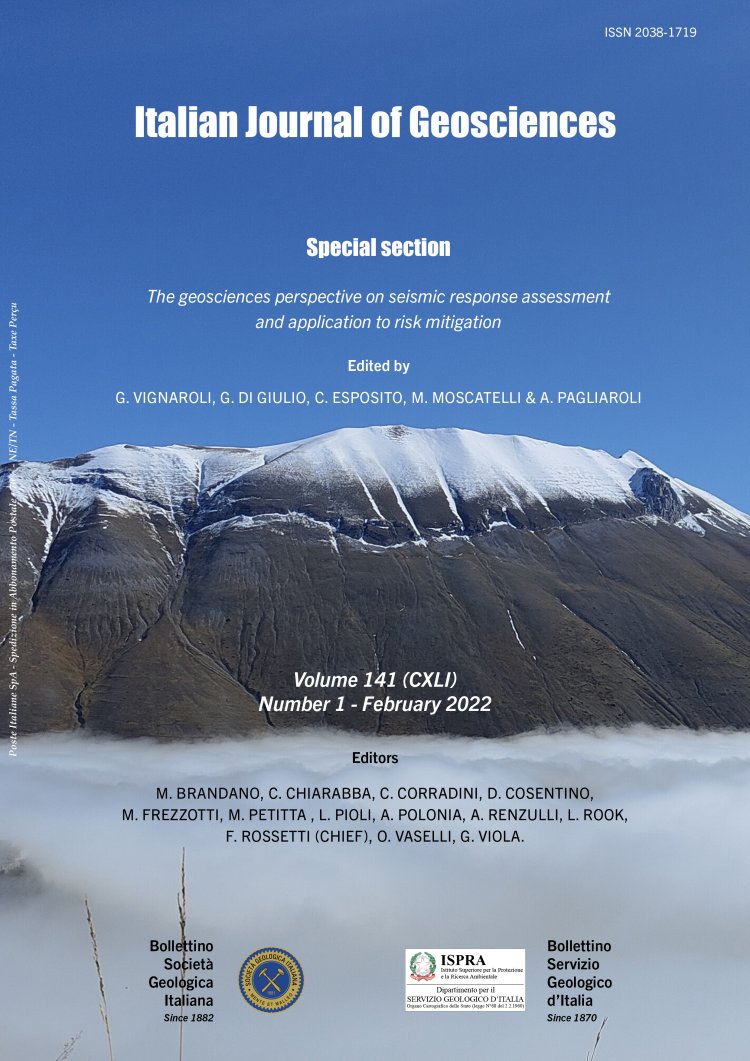
A multidisciplinary approach to detect the seismogenic source of the Tortona 1828 earthquake (Piedmont, Northwest Italy)
Mauro Bonasera1, Giandomenico Fubelli1, Cesare Comina1, Fabrizio Bosco2, Gessica Umili1, Lorenzo Zorloni1 & Francesco Porcarelli1
1Department of Earth Sciences, University of Turin, Via Valperga Caluso 35, 10125 Turin.
2ARPA Piemonte, Regional Agency for the Protection of the Environment, Department Natural and Environmental Risks, Turin.
Corresponding author e-mail: mauro.bonasera@unito.it
Volume: 141 (2022) f.1
Pages: 69-83
Abstract
In areas with flat morphologies formed at the expense of soft rocks, detecting capable faults requires a field- based multidisciplinary approach to help bridge the knowledge gap. In this paper, we present the results of an investigation in the Tortona area (Northwest Italy), where, in 1828, an earthquake caused several casualties and significant diffused damages. Considering the relative “agedness” of this event and the absence of particularly intense seismic activity during recent years, the seismic risk of the epicentral area has not been investigated in detail. To obtain an evaluation of it, twenty-two archives and libraries have been consulted, searching for published and unpublished documentation containing the description of the coseismic effects. The obtained information has been compared with the most updated catalogues. An intensity in the Mercalli intensity scale has been assigned to each new macroseismic data point. Instrumental seismicity has been evaluated to get an estimate of the current released seismic energy. A field survey, coupled with aerial photo interpretation and Digital Elevation Model analysis, has been carried out to verify the presence of tectonic, as well as lithological, influence on the drainage pattern distribution. In this way, geomorphic evidence related to active tectonics has been investigated in the study area. Sharp deviations of the hydrographic network have been detected in the sectors crossing the Staffora and Curone Rivers. Geophysical surveys were used to evaluate the thickness of Quaternary successions and whether they document the presence of geological elements ascribable to capable faults. The investigations suggest the possible presence of a high angle, E-W striking fault affecting Late Pleistocene alluvial deposits.
Keywords
historical seismic catalogues update, geomorphological survey, geophysics, active tectonics, instrumental seismicity.
Get Full Text Supplementary Material